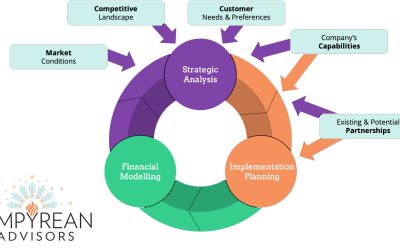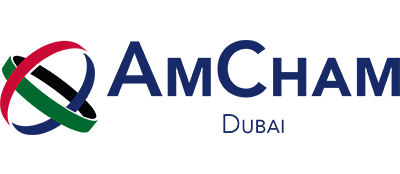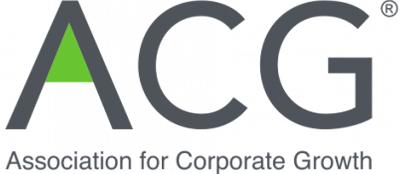By Garett Robertson and Tadeus Dobrovolskij

War is a matter of vital importance to the state; the province of life or death; the road to survival or ruin. It is mandatory that it be thoroughly studied… therefore, appraise it in terms of the five fundamental factors… the first of these factors is moral influence; the second weather; the third, terrain; the fourth command; and the fifth, doctrine.
– Sun Tzu
Businesses are complicated things that are often related to armies going to war with each other. From classics like ‘The Art of War’ to more modern day examples in books such as ‘Team of Teams’ by General Stanley McChrystal. Business, like war, sets a company against a host of factors and competitors which can influence their success. And like war, these factors constantly change, posing an interesting challenge to those trying to lead their troops to victory.
Modern examples of business strategy may be less warlike, but still fundamentally try to examine the factors of success. Some examples include frameworks like Michael Porter’s 5-force model from 1979, or using such tools as SWOT, game theory, value chain, the 5 C’s, or profitability analysis. If succeeding in business rested purely in understanding these models, there would be a great many more successful entrepreneurs in the world. In reality, these models merely showcase a piece of the overall theater of engagement and neglect the most critical pieces of all; leadership, culture and organizational design.
The company is a complex social construct where no single framework can really fit. It is easy to focus on a familiar tool and forget that it only represents one section of the forest. Frameworks, after all, are there to simply help us to structure our thoughts when tackling a certain task. If we step back and analyze the situation, we will realize the forest is actually made of the trees and these tools merely showcase the reconnaissance so leaders can better interpret their circumstances.
The leader that succeeds is the one that sees the forest and is able to put all of the pieces together to navigate a very complex landscape. It is no wonder then that Sun Tzu stated 2 of his 5 initial assessments are about culture and leadership, 2 are about the environment (terrain and weather can be likened to industry and economy respectively) and one, doctrine, is related to the organizational design.
How is it then that most modern frameworks only weakly contemplate leadership and culture? Here we would like to provide two examples of how we managed this challenge. Specifically we wish to create linkage between the leading and lagging indicators of traditional models through connections like culture and leadership.
Skilled Nursing adaptation to ACA
by Garett Robertson
As an example, the skilled nursing industry in the US is undergoing significant changes due to the Affordable Care Act. Reimbursement will decrease for some and increase for others, patient populations will shift through the system to more affordable settings that also address their care needs more effectively, the competitive landscape will change as new buildings are constructed to meet these changing needs and new accountable care organizations are formed. These changes flow through to the bottom line for individual organizations, but simply reviewing the relative levels of threat with Porter’s forces is not a strategy in and of itself. It is more akin to the reconnaissance.
Ultimately, leadership needs to decide what and how they will change to keep pace with the shifting landscape. These decisions will first and foremost impact the customers and pricing, but the fundamental structure of the business could change as well. Will the organizational chart need to be amended to include new divisions or document new lines of authority? Can the existing structure be used, but supplemented with new training? Will new staff need to be hired? Will internal or external reporting change? Will key systems need to be redesigned? Will new or different KPI’s be needed? Will incentives be changed? Are the answers to any of these questions within the team’s execution capabilities or capital constraints? In all of these cases, despite knowing the relative risk as determined through detailed analysis using parts and portions of existing tools, the solutions are varied and complex.
These are all questions I had to ponder when I was leading a skilled nursing provider through the changes brought by the Affordable Care Act. It was not easy and, for us, required that we redesign key parts of our technology platform, recruit additional clinical resources and change key documentation and reporting procedures. Ultimately, we knew what inputs were changing and we knew what we needed the outputs to look like but the really challenging part was changing the throughput. As could be expected, managing personalities and changing the culture was the most difficult and the most important part in adapting to the new regulations.
The whole process took 2 years to complete. One of the lowest performing homes became one of the best with fewer than 5 survey tags during their annual survey process and resulting in admission to important insurance networks which boosted occupancy by 40% and returned the building to profitability. Overall, the company saw a company wide increase in the 5 star rating by nearly a full star on average during this period. The real strategy was in the implementation of the decisions made in response to the new regulations.
How businesses respond to risks and changes is strategy. Everything else is just context. A leader may choose to form new corporate divisions or close others. He may choose to bring in consultants or resolve it internally. He may need to change key systems or incentive structures. A sound strategy is one wherein changes to business inputs are quantified in outputs and justified in the throughputs. For me, leading the skilled nursing provider through this effort was deeply challenging and highly rewarding. While frameworks provided important reconnaissance, success was ultimately determined by factors outside these models such as leadership, organizational redesign and culture change.
Outsourcing in Telecom Industry
by Tadeus Dobrovolskij
More than a decade ago McKinsey wrote that more than 50% of outsourcing deals fail. When it comes to IT, outsourcing can either greatly reduce company’s costs or greatly expand them. Considering that companies which rely on IT outsourcing would like not only to reduce costs, but also achieve simplicity and high quality in their processes, it becomes a great challenge indeed. As we can see from the BCG’s article linked above already, there needs to be a clear, defined strategy for outsourcing to work. Moreover, although strategy is underlying focus for all traditional frameworks, what framework we should use to define what is important for a successful outsourcing endeavor? Value chain? SWOT? Porter’s 5 forces? Simply profitability? What if a company could achieve the same level of savings and efficiency while relying on internal capabilities – is it worth pursuing outsourcing?
As my experience shows, clear vision and understanding are crucial, when management is pondering a question about whether to outsource it. IT departments are treated as cost centers, thus measuring associated expenses is not difficult. However, it’s better to outline exactly what a company would like to achieve from the department first. Normally, the list boils down to:
- SLAs – problems need to be resolved in a timely manner.
- Customer satisfaction – both internal and external customers should be happy with experience of dealing with IT personnel.
- Stability – usually measured by system up-time, IT systems need to be reachable and assure productive work.
- Security – in the world, where cyber criminals and foreign governments are going to great extremes to find weaknesses in existing systems, good IT team should not forget about importance of pro-active security measures.
- Future-proof – technology is ever-changing and it’s easy to lose focus and start piling different vendors and different solutions, increasing complexity in this way. This will lead to sudden cost explosions and decrease in service quality in the future – something that every company would like to avoid.
If we take a look at what needs to be analyzed to assure that we achieve those goals we will see right away that the list is huge: SLAs depend on people, well-defined processes and overall culture; customer satisfaction is influenced by people and culture, but customer demands need to be clear and well-understood; stability depends on suppliers, company’s governance, capabilities, people and processes; security is about people, governance, processes, capabilities and culture; future-proof is affected by overall context, strategy, suppliers, company’s governance, people and capabilities.
This is why it’s difficult to cover all these points while outsourcing and also why one of my clients, a major telecommunication company, took a different approach to the problem. After a satisfactory yet costly reliance on external resources to operate infrastructure for a business-critical service, they decided to take a U-turn and insource. The solution consisted of 5 steps:
- Move the department to an office in a country with lower labor costs.
- Hire people with right attitude and customer-oriented mentality.
- Document processes and reduce reliance on tacit knowledge.
- Reduce the amount of technology vendors.
- Send a highly knowledgeable expert to train newly hired people and assure that they are fully up-to-the-task.
Clearly, the steps undertaken helped to achieve all the goals outlined before: cost savings due to operations in a country with a more attractive labor market, customer satisfaction due to the right employee profile, stability due to decreased amount of technology vendors and well-documented processes, and future-proof due to the decreased complexity. Moreover, training allowed to improve the overall productivity and help to achieve goals like better SLAs and security of infrastructure.
The results were impressive: 75% reduction in operational expenses, roughly 30% improvement in ticket processing time, higher customer satisfaction and increased up-time from 99.9% to 99.99%.
Would it be possible without the right vision? Would it be possible without seeing the big picture or only using the common frameworks? Focusing on one aspect while ignoring all others. Of course not. This is why it’s important not only to have the right information, but also needed resources and outlined goals. It’s important to see the horizon and have a well-defined strategy, including not only reconnaissance provided by the frameworks, but also a detailed approach as to how recommendations will be implemented: analysis of critical risk factors, managerial controls, and cultural implications.
From these two examples, we see clearly the myopia caused by focusing too narrowly on complex business situations. Getting information, especially in today’s digital world, is relatively easy. Deciding how to use it is much more difficult. These decisions cannot be implemented without thorough analysis of how the proposed action will impact the organization as a whole. More than 70% of all change efforts in organizations fail. More than 50% of all outsourcing efforts fail. More than 70% of all M&A efforts fail. With so many failures it is clear that simply knowing the importance of something is not good enough. Perhaps this is why Sun Tzu gave so much attention to culture, leadership and management design. As the famous quote by Peter Drucker goes, “Culture eats strategy for breakfast”, or, from a slightly different perspective, perhaps the most critical part of successful strategy is within the organization and not without.








